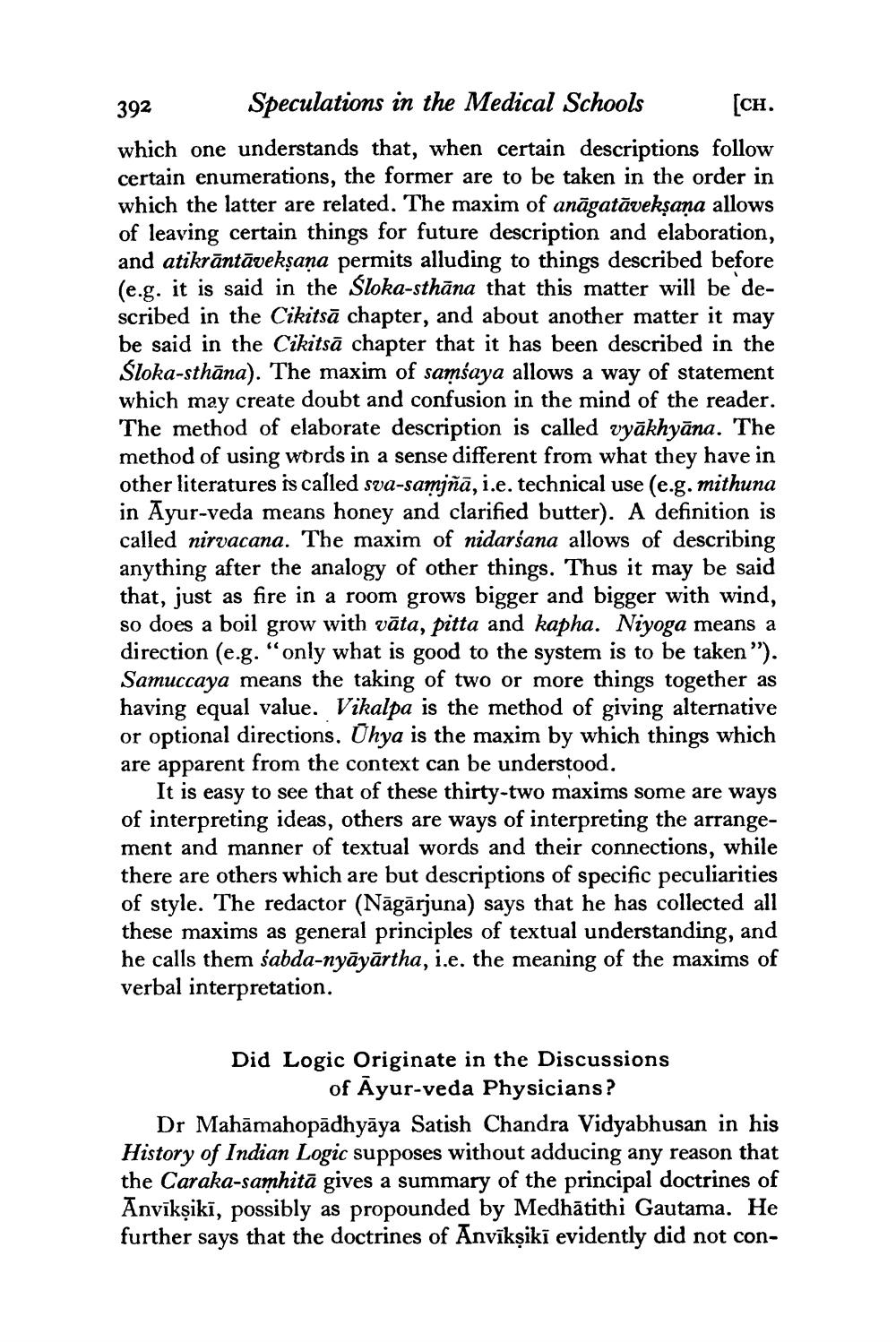________________
392
Speculations in the Medical Schools (CH. which one understands that, when certain descriptions follow certain enumerations, the former are to be taken in the order in which the latter are related. The maxim of anāgatāvekşaņa allows of leaving certain things for future description and elaboration, and atikrāntāvekşaņa permits alluding to things described before (e.g. it is said in the Śloka-sthāna that this matter will be described in the Cikitsa chapter, and about another matter it may be said in the Cikitsā chapter that it has been described in the
Śloka-sthāna). The maxim of samsaya allows a way of statement which may create doubt and confusion in the mind of the reader.
The method of elaborate description is called vyākhyāna. The method of using words in a sense different from what they have in other literatures is called sva-samjñā, i.e. technical use (e.g. mithuna in Ayur-veda means honey and clarified butter). A definition is called nirvacana. The maxim of nidarśana allows of describing anything after the analogy of other things. Thus it may be said that, just as fire in a room grows bigger and bigger with wind, so does a boil grow with vāta, pitta and kapha. Niyoga means a direction (e.g. "only what is good to the system is to be taken ”). Samuccaya means the taking of two or more things together as having equal value. Vikalpa is the method of giving alternative or optional directions. Ūhya is the maxim by which things which are apparent from the context can be understood.
It is easy to see that of these thirty-two maxims some are ways of interpreting ideas, others are ways of interpreting the arrangement and manner of textual words and their connections, while there are others which are but descriptions of specific peculiarities of style. The redactor (Nāgārjuna) says that he has collected all these maxims as general principles of textual understanding, and he calls them sabda-nyāyārtha, i.e. the meaning of the maxims of verbal interpretation.
Did Logic Originate in the Discussions
of Ayur-veda Physicians? Dr Mahāmahopādhyāya Satish Chandra Vidyabhusan in his History of Indian Logic supposes without adducing any reason that the Caraka-samhitā gives a summary of the principal doctrines of Anvīksikī, possibly as propounded by Medhātithi Gautama. He further says that the doctrines of Anvīkşikī evidently did not con




